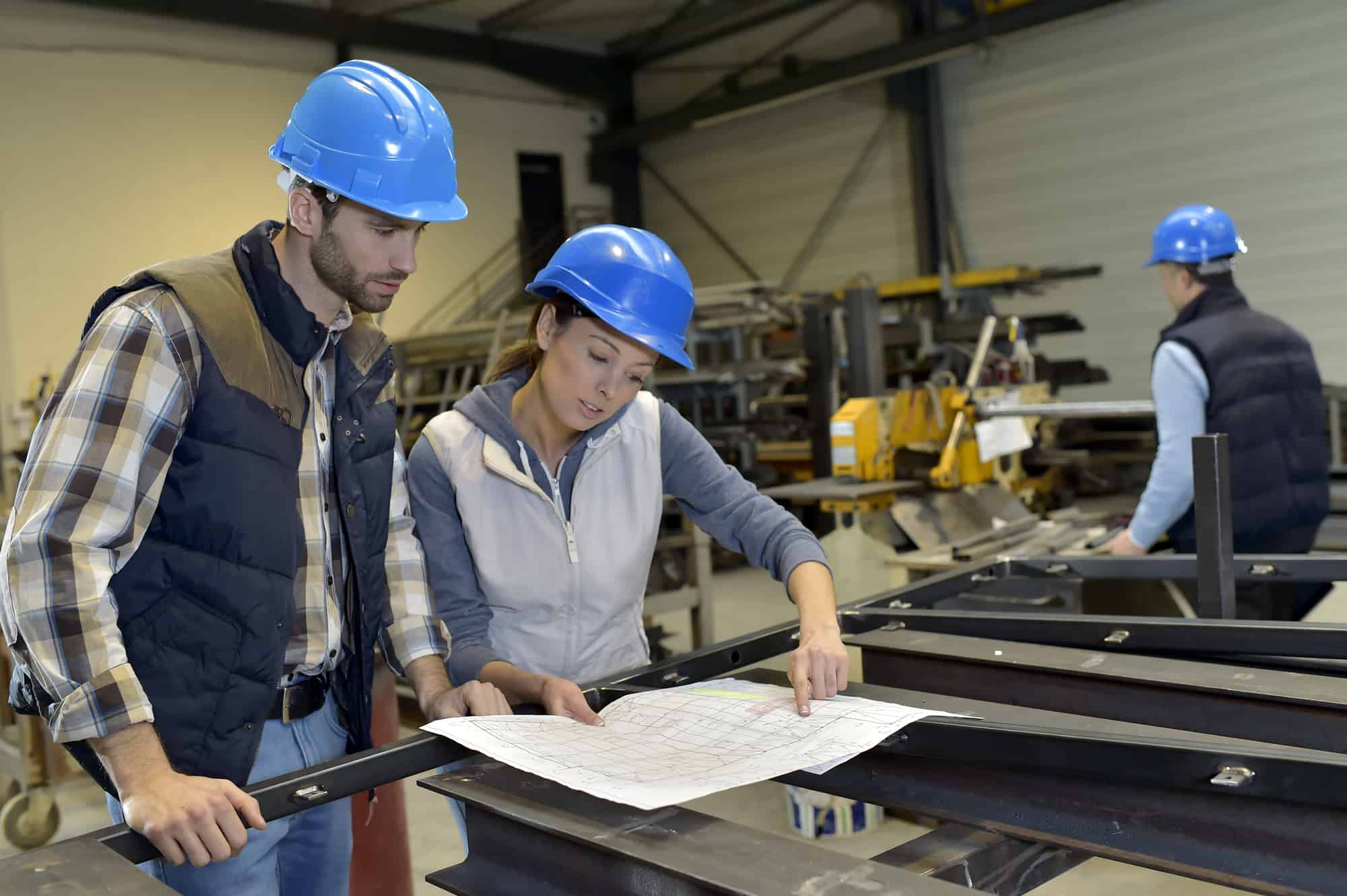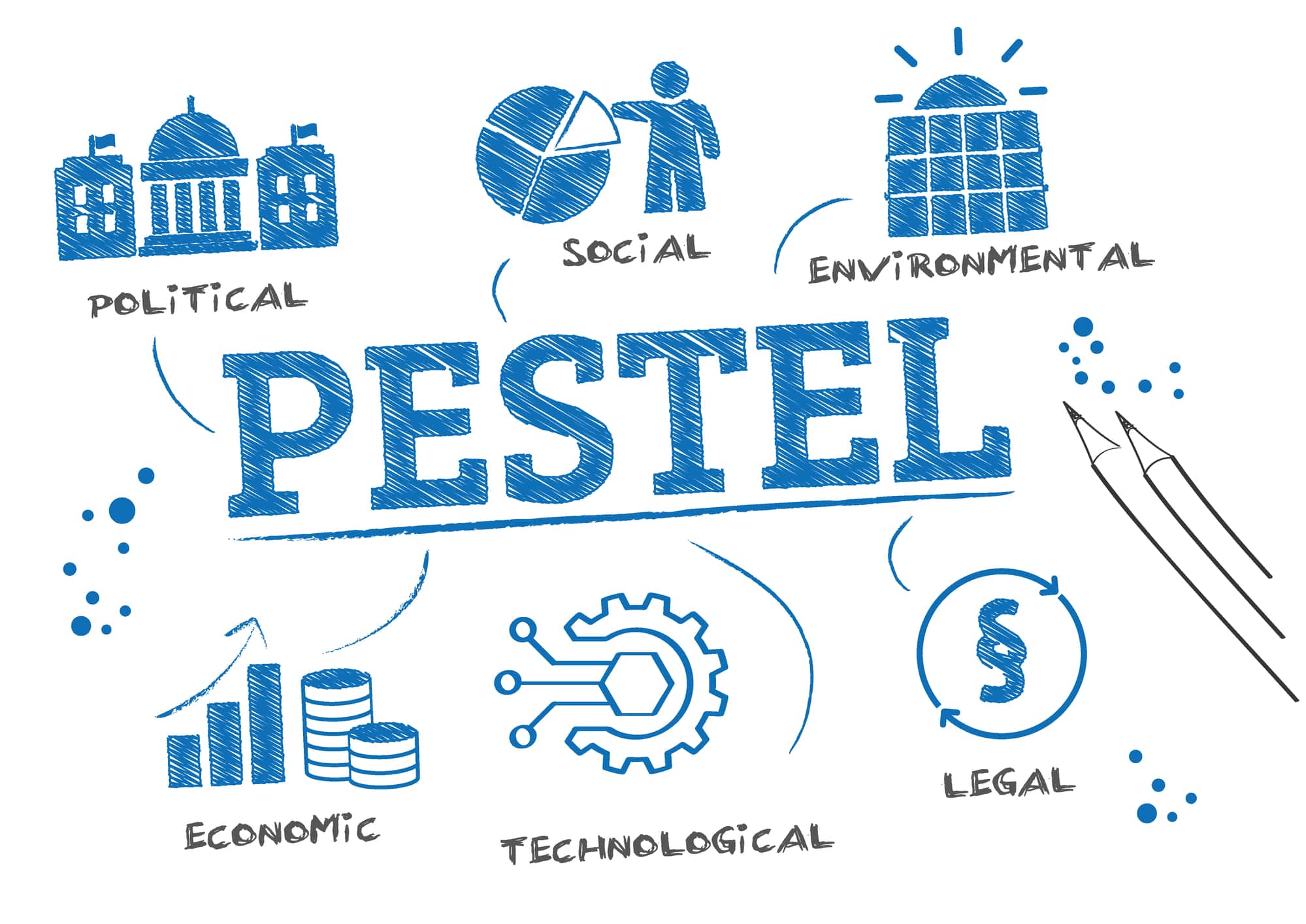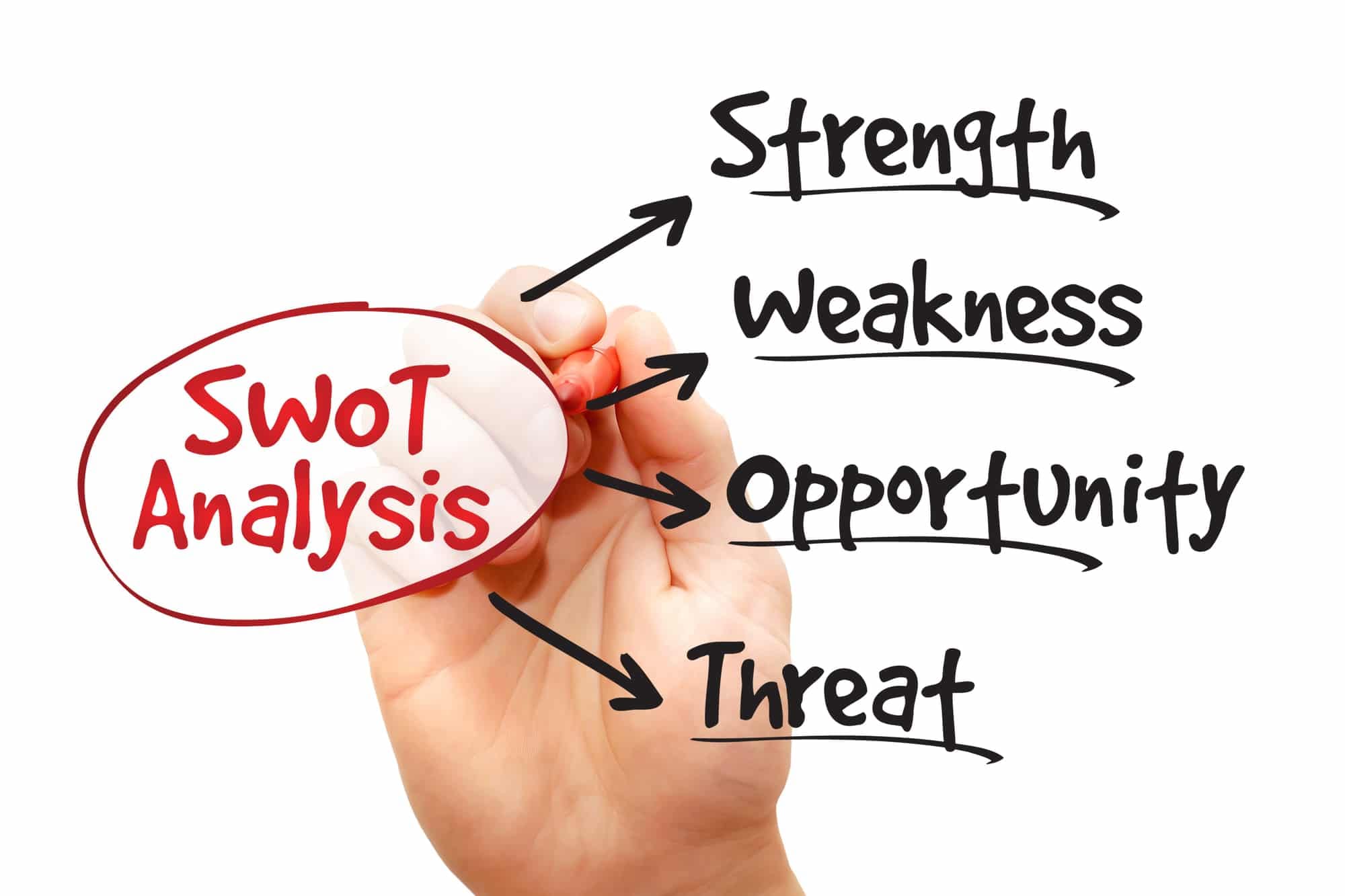Our manufacturing industry analysis dives deep into industry's life cycle, competitiveness and environmental analysis of PESTLE and SWOT.
When you hear about the manufacturing industry, what comes to your mind? You might imagine a visual where labor is manufacturing different products. Well, that is what the manufacturing sector is all about.
You might think it has nothing to do with our daily lives, but that's wrong. The manufacturing industry is very significant and essential in our daily lives. All the products we see and use are assembled and made because the manufacturing industry exists.
The manufacturing industry is essential because it combines all the factors of production to manufacture the goods. It uses manual labor, machines, chemicals, and other technologies to manufacture various products. Today, we will conduct a manufacturing industry analysis to unleash the operations of the manufacturing industry.

The global manufacturing industry emerged in the 18th century after the Industrial Revolution. Before that, most manufacturing was carried out using manual labor.
The concept of mass production didn't exist due to a lack of machines. Hence, small-scale production was carried out to meet the local demand.
The 18th century changed the course of history in many ways. One of the most significant developments was the Industrial Revolution. As steam engines and machines were made, factories started mass production.
Since the industrial revolution started in Britain, all the factories were established there. Factories in Britain started manufacturing more than the local demand, so the surplus products were exported to different countries.
Over the years, the manufacturing industry kept on developing. More countries, like the US and some European countries, experienced industrialization, leading to the establishment of more factories and the spread of manufacturing industry operations.
As more countries started manufacturing products, competition increased. Countries that sold products at the lowest prices started getting orders from all over the world.
Moreover, trade between countries started as globalization increased, and the manufacturing industry flourished. All the factories are counted as part of one global manufacturing industry since goods manufactured in one country are sold globally.
In 2022, the global manufacturing industry produced goods worth $65.02 trillion. Out of this total, material products were produced worth $27.80 trillion, and consumer goods were produced worth $19.96 trillion.
The global manufacturing industry is expanding daily due to technological advancements. Moreover, our increasing reliance on it has also contributed to this expansion.
Now that we have highlighted the significance of the manufacturing industry let's proceed further and discuss what Industry analysis is since, in today's article, we will conduct the industry analysis of the manufacturing industry.
Industry analysis is a technique for gaining insight into a specific industry. The process of conducting an industry analysis is quite simple.
First, we must assess the life cycle of the specific industry. Then, we must identify the competition within that industry. Finally, we conduct an environmental analysis of the industry to assess its environment.
Now that you know what industry analysis is, let's proceed further and analyze the life cycle of the manufacturing industry.

Manufacturing Industry Life Cycle
The industry life cycle has five stages. The first stage is the startup stage. After that, the industry experiences the growth and shakeout stages. Towards the end of the life cycle, industries undergo maturity and decline.
Every industry goes through these five stages. The purpose of highlighting the manufacturing industry's life cycle is to show which stage the industry is in.
Startup Stage
The startup stage is the first stage of the industry life cycle. Industries are in their startup stage in their early years. In this stage, fewer firms operate in an industry, so there is less competition.
The manufacturing industry went through the startup stage in the 18th century. Only Britain had experienced an industrial revolution at that time, so there were few factories and less competition.
Growth Stage
The growth stage is the second stage of the industry life cycle. In this stage, competition within an industry increases as more players begin to enter it. Because of this, consumers have more alternatives when an industry is growing.
The manufacturing industry experienced growth when more countries experienced industrialization. Due to that, the number of factories across the globe increased. Hence, competition in the industry increased.
The manufacturing industry has surpassed the growth stage and is currently observing growth at a very slow pace. Between 2023 and 2028, the industry is expected to grow at a rate of 3.57%.
Shakeout Stage
In this stage of the industry life cycle, a few financially strong companies start exercising their power. Large companies acquire smaller companies and force them out of the market.
In the late 1990s and early 2000s, the manufacturing industry was in the shakeout stage.
Some players expanded their market share and greatly contributed to the total output. Moreover, many large players acquired smaller manufacturers to retain their share in the industry.
Maturity Stage
At the maturity stage, industries operate at their maximum potential. An industry's annual growth rate decreases in this stage, and players' positions are established.
Currently, the manufacturing industry is in the maturity stage. The industry's growth rate has decreased to 3.57%, and competition is at its maximum. Moreover, the position of dominant players in the industry is established, and it is tough for new players to enter the market.
Decline Stage
This is the last stage of the industry life cycle. When an industry enters the decline stage, the players' shares begin to fall, and companies start to exit the industry.
The manufacturing industry has not yet reached the decline stage. As long as manufacturing takes place in one form or another, it won't enter the decline stage.

Assessing The Competition: Porter's Five Forces Model
The second stage of industry analysis involves assessing competition. One of the best techniques for this is Porter's Five Forces Model.
Porter's five forces model has five stages and is used to assess competition in an industry. In this section, we will use it to assess the level of competition in the manufacturing industry.
Competitive Rivalry
This section of Porter's five forces model highlights the competition level between companies within an industry. In the manufacturing industry, there are millions of manufacturers. Hence, the competition between manufacturers is intense.
However, since different manufacturers produce different products, their competition is reduced to a certain level. Moreover, high barriers exist because of the huge fixed and sunk costs. As a result, firms hardly exit the industry.
Supplier Power
Supplier power refers to the power suppliers have to dictate prices. In the manufacturing industry, suppliers don't have enough power because there are many of them. Manufacturers have the option to source the raw materials locally or internationally.
Buyer Power
Buyer power refers to the power buyers have to dictate prices. Buyers have enough power in their hands to dictate prices. In many cases, buyers have protested or boycotted certain products if they were overpriced. As a result, manufacturers were forced to decrease the prices.
Moreover, buyers are the end users, meaning they are the manufacturers' market. If buyers are offended, then manufacturers can't sell their products in the market.
Threat of Substitution
This section analyses the threat companies in an industry face from being substituted. Manufacturers feel threatened by consumers because many manufacturers are in the market, and consumers have many options.
Threats of New Entry
Companies operating in an industry always feel threatened by new entrants. In the case of the manufacturing industry, there isn't much threat of new entrants because the manufacturing industry isn't growing at a rapid rate, which is why companies will hesitate to enter the industry.
Moreover, the manufacturing industry has many barriers to entry. It needs a lot of capital and resources to enter, which makes it difficult for new companies to enter.
Environmental Analysis
Now that we have discussed the life cycle of the manufacturing industry and assessed the competition let's proceed and conduct an environmental analysis of the industry.
In the environmental analysis, we will conduct a SWOT and PESTLE analysis of the manufacturing industry to determine what internal and external factors impact its operations.

PESTLE Analysis of The Manufacturing Industry
PESTLE analysis is a tool that highlights political, environmental, social, economic, technological and legal factors impacting industry operations. Let's discuss how these factors impact the manufacturing industry.
If you want to see what external factors impact the manufacturing industry in detail, look at the PESTLE analysis of the manufacturing industry.
Political Factors
Due to political turmoil between countries, manufacturers may be unable to source raw materials from their desired country. In such cases, manufacturers will suffer and might have to source expensive raw materials.
Economic Factors
In case of a global recession, the demand for goods will fall. As a result, manufacturers will be unable to produce goods to their maximum capacity. Hence, manufacturers' per-unit costs will increase since they will not be able to achieve economies of scale.
Social Factors
Propaganda campaigns against specific producers can damage their reputations and reduce the demand for their goods. As a result, the profits of those manufacturers will fall, and they will suffer financially.
Technological Factors
As technological developments take place, manufacturing becomes easier. Manufacturers can now use AI and machine learning to manufacture products more efficiently.
Legal Factors
Manufacturing units worldwide must ensure that they protect the rights of their laborers and their customers' data. If they fail to do so, they may face lawsuits.
Environmental Factors
Manufacturers have to shift to sustainable packaging. The use of plastic in packaging causes pollution and severely damages the environment. Environmentalists might start campaigns against the manufacturing industry if they don't shift to eco-friendly packaging.

SWOT Analysis of The Manufacturing Industry
SWOT analysis is a tool that identifies internal and external factors that impact an industry's operations. This section will conduct a SWOT analysis of the manufacturing industry.
Strengths
Strengths refer to the internal factors that give an industry an edge over others. One of the strengths of the manufacturing industry is that it has a great demand. People across the globe demand manufactured goods.
Moreover, another strength of the manufacturing industry is that it has developed infrastructure and machines to carry out manufacturing at a large scale.
Weaknesses
One weakness of the manufacturing industry is its reliance on suppliers for raw materials. The manufacturers will suffer if there is any disruption in the supply chain.
Opportunities
The manufacturing industry can become more efficient by using the latest technologies, such as AI and machine learning. These technologies can also help the sector identify potential customers.
Besides that, as the global population is increasing, the manufacturing industry has the potential to further expand its operations since the demand for manufactured products will increase along with the population.
Threats
The manufacturing industry feels threatened by unseen economic challenges, such as global economic recessions, which cause the demand for its products to fall.
Moreover, wars and conflicts between countries can negatively impact the manufacturing industry's operations. In case of wars, manufacturers won't be able to source their raw materials from the country involved in the war.
Manufacturing Industry Analysis: Final Word
The manufacturing industry is one of the biggest in the world. In the 18th century, the Industrial Revolution laid the foundations for it.
The manufacturing industry has evolved over the years. Today, we decided to analyze it, so we conducted an industry analysis consisting of three stages.
In the first stage, we analyzed the life cycle of the manufacturing industry. In the second stage, we discussed the industry's competitiveness. In the final stage, we conducted an environmental analysis of the manufacturing industry to see what internal and external factors impact its operations.


